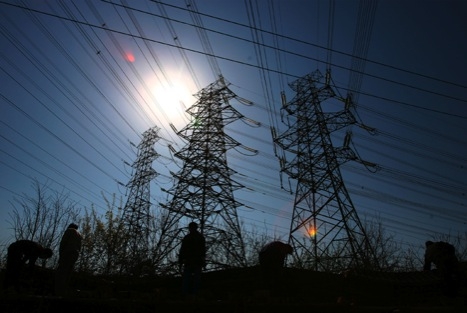Among the GCC economies, Saudi Arabia is seen as the most aggressive with respect to investments in the power sector, Kuwait-based Kuwait Financial Centre ( Markaz ) said in the summary of its report on infrastructure covering power, airports, seaports, roads & railways, ICT and water.
The report said Saudi Arabia strives hard to keep pace with the increasing demand for electricity due to population growth and high level of urbanization.
IMF estimates Saudi population to increase from the current 28 million to reach 31 million by 2015 and 37 million by 2020. Urban population contributes around 83.6 percent of the total population in the Kingdom which is growing at 2.2 percent annually. High economic development has also accelerated energy consumption in the Kingdom, the report said.
Power consumption in the Kingdom has grown at a compound annual growth rate of 6 percent over the last 5 years and consumption is forecast to grow at a similar pace over the next few years as well.
Saudi Arabia is one of the top ranked nations with respect to residential consumption of electricity. Almost half of its power consumption is used by its residents. With diversification of the economy, however, Markaz expects a shift toward the industrial sector.
Currently, 49 percent of the power generation is sourced through natural gas and the remaining through liquid fuels, with renewables accounting for a negligible share. The situation would change as nuclear and solar power is increasingly seen as an option to satisfy the demand, the report noted.
In 2000, Saudi Electricity Company ( SEC ) became operational with all the electricity companies included in it. As of now, SEC is the leading power producer in the Kingdom with about 50 operating units across the country with a capacity of over 40,000 MW, Markaz further said.
From the period of its , the generation capacity has grown by 2.5 times. SEC is estimating a 46 percent increase in sold energy by 2016 compared to 2010 figures. In 10 years of its inception, total power transmission has increased by almost 50-60 percent and total transmission lines have increased by almost 75 percent. Number of customers under the SEC 's operation has also increased by over 70 percent during this period.
Recent developments indicate that SEC is planning fresh investments of close to $100 billion in order to meet the forecasted demand.
By 2020, the Saudi government is planning to create an additional 30,000 MW of generation capacity as part of its plan to ramp up power generation capacity by two folds by 2030. Moreover, many projects are implemented through private participation as well. This is a huge invitation to foreign players to invest in the Kingdom and be a partner, leveraging the opportunities of GCC power grid and Pan Arab power grid.
Markaz also forecast huge investments in alternative energy in the Kingdom as the Saudi government has announced plans to establish nuclear power plants.
According to King Abdullah City for Atomic and Renewable Energy (KA-CARE), after the successful completion of establishing and commissioning of nuclear power plants, the Kingdom aims at generating 20 percent of its demand through nuclear by the end of 2030. The Kingdom is also aiming to have 41,000 MW of solar power capacity in the next two decades.
Saudi Arabia has a very strong track record in the development of power projects. The Saudi government has long demonstrated a substantial commitment to social and economic infrastructure (and to the power sector in particular).
The country is executing an expansion plan for power projects under the Ninth Development Plan (2010-2014) aiming to raise generating capacityby 20.4 gigawatts (GW) by 2014.
BMI forecast earlier that the Kingdom will be able to meet its commitments, and total installed capacity will reach about 72GW by 2014.
The Kingdom is seeking $109 billion of investment to be channelled into expanding its undeveloped solar industry – aiming to reach an ambitious target of 41GW of installed capacity by 2032.
The Saudi Gazette
23 August
























































